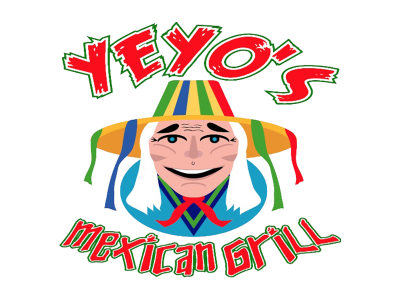Hospitality & Tourism
Almost 15 million Americans work in tourism and hospitality—in hotels, amusement parks, art museums, and restaurants—making it the fifth largest industry in the country.1 Many of these jobs depend on our immigration and visa systems. International tourists create high demand for the tourism industry. Meanwhile, many employers have trouble finding enough American workers to staff resorts, hotels, and attractions. Current policies not only discourage international tourists and business travelers, but also keep American businesses from finding the workers on which the tourism industry relies.
1 Bureau of Labor Statistics (BLS), “Industry employment and output projection to 2024,” Monthly Labor Review, December 2015. Available online.

“The Fight” & Sybil’s Bakery Recipe
In conjunction with the nationwide release of The Fight (which you can rent by clicking the hyperlink), New American Economy is extremely excited to welcome back Sybil’s Bakery for a special cooking demo live on Friday, August 7, on our Instagram channel. Sybil’s Bakery is located in Queens,… Read More

TERANGA Special Recipe
We at New American Economy were so excited to have Nafy Flatley joining us Sunday, June 28, for a very special and exclusive demo on our Instagram Live! Nafy is the founder of Teranga, a food and beverage company inspired by baobob and hospitality. Nafy is bringing Senegalese cuisine from… Read More

Yeyo’s El Alma De Mexico Special Recipe
We at New American Economy are so excited to have Rafael Rios joining us Tuesday, May 5, for a very special and exclusive demo on our Instagram Live in celebration of Cinco De Mayo! Rafael is the Executive Chef, Founder, and CEO of Yeyo’s El Alma De Mexico. Yeyo’s is… Read More

MáLà Project Special Recipe
We at New American Economy are so excited to have Amelie Kang joining us Tuesday, April 28, for a very special and exclusive demo on our Instagram Live! Amelie opened the first location of MáLà Project in East Village at just 24-years-old, turning her love for original Chinese home cooking… Read More

James Chang Special Recipe
We at New American Economy are so excited to have James Chang joining us Monday, April 20, for a very special and exclusive demo on our Instagram Live! James is a captain at Waldo Thai, the pioneers of Thai Food in Kansas City. However, for today’s ingredient, James will be presenting… Read More

La Newyorkina Special Recipe
We at New American Economy are so excited to have Fany Gerson joining us Thursday, April 16, for a very special and exclusive demo on our Instagram Live! Fany is the founder of La Newyorkina, A woman owned, Mexican sweets company specializing in all natural, handmade paletas, ice cream, baked… Read More

Sambuxa NYC Special Recipes
We at New American Economy are so excited to have Gladys Shahtou joining us Thursday, April 9, for a very special and exclusive cooking demo on our Instagram Live! Gladys is the founder of Sambuxa NYC and the only Sudanese caterer in NYC. She is known for her hand-made samosas… Read More

Sybil’s Bakery Special Recipe
We at New American Economy are so excited to have Amanda Bernard joining us Tuesday, April 7, for a very special and exclusive cooking demo on our Instagram Live! Amanda is the daughter of Ken Bernard, the owner of Sybil’s Bakery in Queens, New York. You can learn more about… Read More

Undocumented Immigrants and the Covid-19 Crisis
The United States is facing the most dire healthcare crisis in recent memory. Last week, NAE took a look at the role immigrants are playing in the fight against the coronavirus outbreak as healthcare workers and in supporting industries. Today, we examine the most vulnerable group of immigrants, the… Read More
Immigrant Workers
It is hard to imagine the country’s $700 billion tourism and hospitality industry2 without the contributions of immigrants. In 2015, foreign-born workers made up more than one out of every five workers in the sector—and even larger shares of those employed in more labor-intensive roles.3 In states where tourism and hospitality is especially vital, immigrants represent a significantly larger share of the workforce than the population overall.
Sources:
2 U.S. Bureau of Economic Analysis, “Table 1: Value Added by Industry,” annual estimates for 2015, accessed October 25, 2016. Available online.
3 Author’s calculations from the 2015 American Community Survey.
Table sources: Author’s calculations from the 2015 American Community Survey.
States Where Immigrants Are the Most Overrepresented in the Hospitality Workforce, 2014
The Role of Foreign-Born Workers in Selected Labor-Intensive Hospitality and Tourism Roles, 2015
More Workers Needed
As the tourism and hospitality industry expands, it will need additional workers to maintain, service, and manage venues across the country. However, between 2010 and 2020, almost 80 percent of all the projected new positions in the industry will require less than a bachelor’s degree.4 This growth is at odds with nationwide demographic trends, as the number of U.S.-born individuals at that skill level is declining.
Sources:
4 Author’s calculations of a straight-line projection using data from the Current Population Survey, 2002-2015.
5 Bureau of Labor Statistics (BLS), “Industry employment and output projection to 2024,” Monthly Labor Review, December 2015. Available online.
Table source: Burning Glass Technologies
States with the Greatest Need for Hospitality Workers, 2015
The Impact of International Visitors
While domestic travelers still account for the largest share of U.S. tourism expenditures, international tourists are critical to the strength of the industry overall. On average, international tourists spend $4,500 on goods and services each time they visit the United States—making tourism our country’s largest export in recent years.6 That spending has a ripple effect on the broader economy. The U.S. Travel Association estimates that every $1 million spent by foreign visitors creates 6.6 tourism jobs.7 Each tourism job, in turn, indirectly supports 1.5 jobs in related industries such as construction, marketing, accounting, and manufacturing.8
Sources:
6 "Statement from U.S. Commerce Secretary Penny Pritzker on President Obama’s Executive Actions to Welcome More International Visitors," Commerce.gov, May 22, 2014. Available online.
7 U.S. Travel Association, “Travel Exports: Driving Economic Growth and Creating American Jobs,” September 10, 2014. Available online.
8 World Tourism Organization and International Labour Organization, “Measuring Employment in the Tourism Industries – Guide with Best Practices,” UNWTO, Madrid, 2014. Available online.
Table source: Burning Glass Technologies
The Current System Hampers International Travel
Since September 11, necessary security measures and visa restrictions have made travel more difficult for many international tourists. One way to increase the number of international travelers to the United States, while still safeguarding security, would be to expand the number of countries eligible for the Visa Waiver Program (VWP). Participating countries must meet stringent security standards for vetting potential U.S. visitors and share information about possible terrorist and criminal threats, general and specific, with the U.S. government. Research finds that when a country joins VWP, the number of visitors from that country to the United States increases substantially.
Sources:
9 New American Economy, "Passport to Future Economic Growth," December 15, 2014. Available online.
10 Ibid.
Reforming the H-2B Visa
Tourism and hospitality companies across the United States depend on immigrant workers to help fill seasonal and labor-intensive jobs that would otherwise remain vacant. In 1986, under President Ronald Reagan, the H-2B visa program was created to allow immigrants to enter the country legally as temporary workers. Unfortunately, as currently administered, the H-2B program is too cumbersome and costly—and riddled with delays—to be useful to many U.S. businesses. Many employers say the supply of available visas is also far too limited to meet actual labor needs.
Sources:
11 Estimate based on figures provided by the H-2B Workforce Coalition and the U.S. Department of Labor Office of Foreign Labor Certification’s 2015 Annual Report.
12 “Immigration Myths and Facts,” U.S. Chamber of Commerce, April 14, 2016. Available online.
Impact on the States
Getting immigration reform right for the tourism and hospitality industry will be critical for many states, particularly those where the sector accounts for a substantial share of the state’s GDP. For example: in 2014, more than one out of every six dollars of GDP in Nevada was tied to the tourism and hospitality industry, as were almost one in 10 dollars of GDP in Hawaii. In Nevada, immigrants frequently hold the kinds of low-level and labor-intensive jobs that not only allow hotels and casinos to thrive, but also help create jobs for American workers at a variety of skill levels.
Table sources: Data on GDP come from the BEA’s estimates for annual GDP by state by major industry sector. Information about jobs comes from the 2014 American Community Survey.
States Most Dependent on a Strong Tourism Workforce, 2014
Top 10 Occupations Most Reliant on Immigrants in Nevada, 2014 (All Sectors)
Make a contribution
Make a direct impact on the lives of immigrants.

